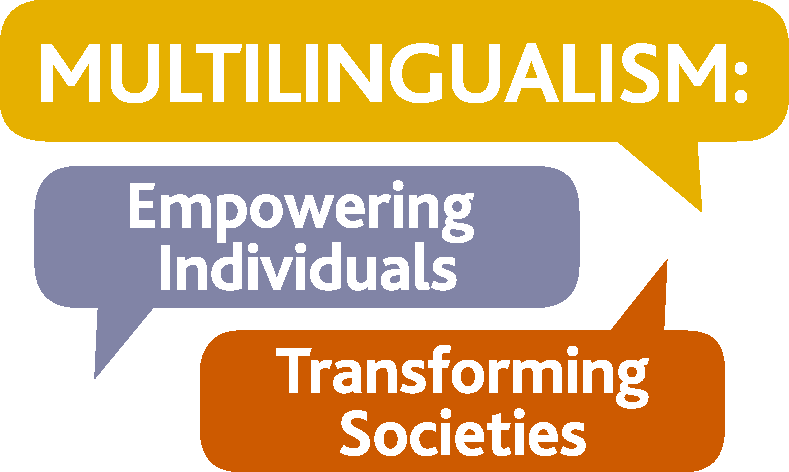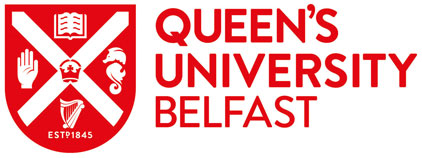Naturally, the question of what it means to be multilingual is one I receive frequently in my work as a researcher on the MEITS project. In the simplest terms, being multilingual can perhaps be defined as ‘being able to speak or use more than one language’; however, as Harper’s blog (16 August 2017) on the differences between bi- and multilingualism already highlighted, simple definitions often hide great complexity. Having worked on multilingualism in the European (Netherlands), South American (Ecuador) and North American (USA) contexts, I have come to understand that multilingualism knows many different stories; stories that nevertheless reveal a coherent narrative in terms of the cognitive, psychological, educational and social reality of what it means to be multilingual. From a scientific perspective, understanding the nature of multilingualism and its role in human life is not only about collecting and comparing individual stories, but also about applying different disciplinary lenses through which to observe, analyse and come to understand them. It is this principle that lies at the heart of the MEITS project, and it is with this principle in mind that I would like to share one of these stories – a story situated in the US context, as lived and experienced, and beautifully rendered by Melissa Lozada-Oliva, a poet, educator and heritage language speaker of Spanish living in Boston:
From a cognitive perspective, Melissa’s story of multilingualism can be read as a story of unequal access to knowledge, as she finds herself ‘reaching for words at the top of a shelf with no stepping stool’ to ‘find only air’; as she feels ‘there are words that will always escape her’, yet at times is ‘hit on the head with the words she’s been hiding up there’. Rarely, if ever, is it the case that multilinguals have equal knowledge and skills in all their languages. For instance, it may be that a multilingual individual is able to read advanced-level texts in an additional language, but not necessarily be able to converse fluently in that same language, or vice versa. This depends entirely on how this individual has used their languages previously and the opportunities they have had for developing certain language skills over time. The same applies to other aspect of language knowledge, like vocabulary. The way languages are stored, the way words are connected in the mind, as well as the ease with which these words are then accessed and retrieved, depends largely on how, how often, and in what contexts multilinguals have used their languages previously, this never being the same for each of the languages that they speak.
Interestingly, research has highlighted that difficulties in finding the right words is not always a sign of not knowing these words. Rather, it can be the result of unequal and competing access to word knowledge from different languages as they are stored in an integrated manner in the mind of the multilingual speaker, with words from different language being activated simultaneously, and the correct one needing to be selected in relation to the language and context in which the interaction takes place. Sometimes this can result in a particular cognitive state whereby the word lies on the tip of the tongue, yet remains irretrievable, even though you know you know the word and are still able to access associated words. Although we are all familiar with this feeling, this cognitive state that has been found to affect multilingual speakers more often than monolingual speakers. Interestingly, however, it is this same cognitive mechanism of selecting conversationally-relevant and suppressing conversationally-irrelevant words across languages – a cognitive feat that multilinguals perform on a daily basis – that is understood to counteract cognitive ageing, delay the onset of dementia, and to improve stroke outcomes (see also Thomas Bak’s blog on 4 October 2017), thereby revealing significant cognitive health benefits associated with managing multiple languages in the mind.
From an educational perspective, Melissa’s story too is a story of unequal access to knowledge, but to new rather than previously acquired knowledge. This we learn from Melissa’s description of her Spanish-speaking self as ‘sitting in the corner of a classroom, chewing on a pencil, not raising her hand’, as well as in the story of ‘her parents meeting in an ESL (English as a Second Language) class’ where they ‘trained their mouths’ and ‘tied their tongues to a post with an English language leash’. Hers is the story of children whose home languages differ from that of schooling, being denied full access to education because of unequal opportunities to participate in the learning process in mainstream schooling. Conversely, it is the story of social separation in pull-out ESL classes, where heritage-language speakers may receive language instruction from a specialist language teacher, but do so away from the mainstream learning context.
Both English-only mainstream and ESL pull-out educational approaches rest on assimilationist policies and practices, whereby learners of an additional language are expected to achieve native-like language proficiency (incl. pronunciation) in the societal language, usually at the expense of their home languages and mother tongues. This, as Melissa’s poem reveals, often comes at great personal cost and loss in terms of a sense of belonging to the heritage language community. Moreover, research has revealed that these approaches contribute very little to raising the academic achievement and well-being of multilingual learners. Research on effective schools and classrooms for multilingual learners has highlighted that ESL pull-out classes, in fact, deprive additional language learners of the opportunity to be exposed to the socially and academically rich interactions associated with mainstream schooling, both of which are key to their linguistic and academic development. ESL pull-out classes have also been found to feed into the social stigma associated with segregation. Conversely, research has consistently found significantly better outcomes for approaches that nurture the students’ home languages alongside the language of school; that provide high language support embedded in academically challenging mainstream education; and that view multilingualism as a resource rather than a problem for learning.
From a sociolinguistic perspective, Melissa’s story of multilingualism is a story of unequal status and of battling linguistic stereotypes. It is the story of how a language belonging to a cultural group is reduced to simplistic associations and cultural tokenism; of Spanish being reduced to ‘spicy food’, to ‘Zorro’, to ‘red lipstick on a toothbrush’, to sexiness. It is the battle of desperately trying to lose one’s accent to avoid being socially stereotyped and stigmatised, and to become accepted as ‘American’. It is the story – as shared by many minority or migrant-background language users – of assimilating into the dominating society and the challenges this poses for maintaining heritage languages and their associated cultural identities. The poem powerfully describes how these dominating social forces play out at the individual and psychological level, telling the story of a cross-generational transformation of a language from one that her mother’s tongue ‘had always been in love with’, to one that features ‘on a resume as a skill’; from one that connected the speaker to their community, to one that serves a largely instrumental and economic purpose. It reveals the internal struggle of, on the one hand, wanting to take pride in one’s heritage, as something that cannot ‘be eaten and then shit out’, while on the other hand ‘not really believing it’, as the heritage language has gradually lost its full range of purposes within an individual’s life. Within this story of unequal status and linguistic stereotypes, Melissa’s Spanish has become a language she has to ‘choose to remember’, as reflecting the individual struggle and strength involved in heritage language maintenance at the societal level.
From a literary perspective, Melissa’s poem is a linguistic feat, revealing her highly skilful use of language in rendering a powerful message about the complexity of multilingual identity, a message made all the more powerful by being encoded in Melissa’s other and stronger language, English. Her skilful use of English stands in stark contrast with the image of her Spanish as ‘puzzle left in the rain, too soggy to make its parts fit together, to look just like the picture on the box’, and underscores the involuntary suppression of her linguistic and cultural heritage as described and depicted in the poem. As such, Melissa’s poem, as a literary text, offers a window on the place and function of language within culture and cultural identification, revealing to us the individual and social processes that shape multilingual and multicultural identity. It also highlights our shared responsibility in equipping individuals and societies with the tools they need to respond to the challenges, but also the opportunities associated with multilingualism.
Seemingly simple questions, thus, tend to have complex answers; answers that need to be sought with precision, care and with concern for individual and societal well-being. This is why I am so excited to be part of the MEITS project, as it seeks to give voice to the many personal stories of multilingualism while simultaneously establishing a shared understanding of multilingualism across contexts and disciplines, and investigates how multilingualism is vital to and shapes individuals and societies.
Note: comments are moderated before publication. The views expressed in the comments are those of our users and do not necessarily reflect the views of the MEITS Project or its associated partners.







